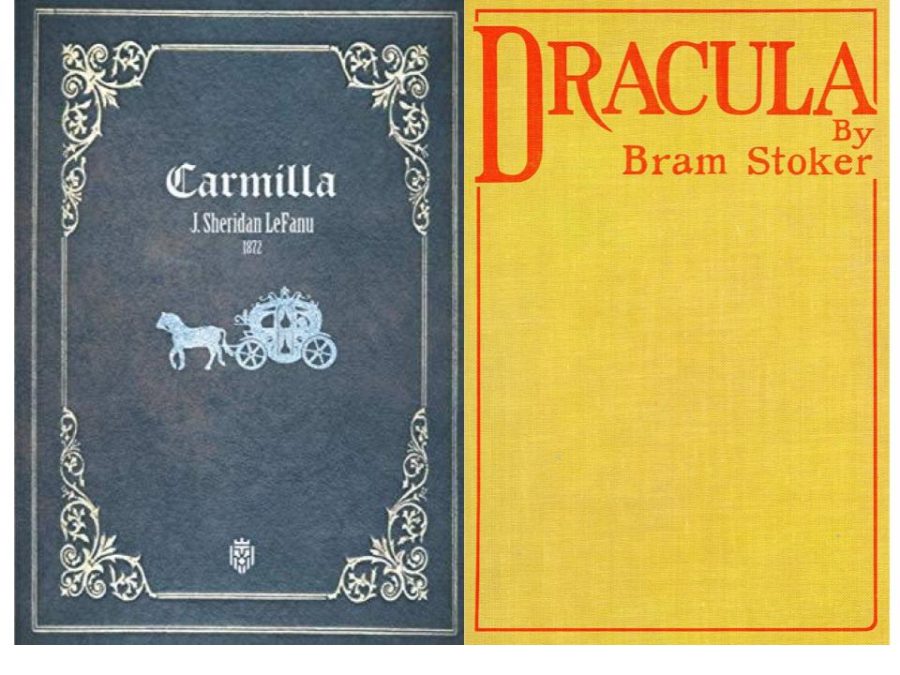Revisiting Horror:
Carmilla & Dracula – Social Culture and Vampire Stories in the Victorian Era
Social culture and vampire stories from the Victorian era may be much more reflective of one another than initially thought. By examining two vampire stories (Carmilla by J. Sheridan Le Fanu & Dracula by Bram Stoker) written during that period, readers can uncover the complexities of changes and constants in a seemingly stagnant social environment.
The Victorian era can be characterized as having a repressed, stiff social culture in which Christianity and Christian moral standards were ubiquitous. However, social patterns gave rise to a wide array of change–the New Woman arising from growing marriage rates and the idea of the domestic sphere; the upper and lower classes dividing to usher in a new middle class; economic growth leading to English excellence; and scientific thought creating racism in the field.
Literature, being quick to react (not so quick to be accepted), reflected these changes in various ways. Specifically, in Victorian horror. Even more specifically, in Victorian vampire stories. There’s an intriguing comparison to be drawn between Bram Stoker’s Dracula and J. Sheridan Le Fanu’s Carmilla.
Dracula is one of, if not, the most recognizable and renowned vampire stories ever written. Beyond the drawn out descriptions of Dracula’s dirt boxes and Lucy’s blood transfusions, the novel is a reflection in agreement with the sociocultural norms of the Victorian era.
Lucy and Mina’s contrasting, yet overlapping character traits are evidence of this. It’s not necessarily in their characteristics, but in the way Stoker writes their changing qualities as well as other characters’ reactions to these changes. It’s evident that the text is drowning in fear of what remains unknown–manifested in xenophobia, homophobia and the panic of what is brought by those who fall outside of both norms, all of which saturate Stoker’s writing.
Predating Dracula by 20 years, on the other hand, is Carmilla—a female-centric, queer, and enigmatic gothic novella. Some readers might describe it as an antithesis to Dracula, but there is complexity that makes it more than just a strictly opposing perspective.
Carmilla, this story’s vampire, is not characterized as evil and “other”, rather she is introduced by Laura—the narrator—as a sensuous, beautiful stranger that is immediately welcomed into Laura’s home. Le Fanu explores female sexuality through a lens that doesn’t demonize “non-traditional relationships” especially in a period marked by sexual repression and even absence of “sexuality”.
The author’s blatant inclusion of homosexuality is representative of a counterculture that wasn’t welcome, but was present nonetheless, and which contributed to a culture of change that lay behind the veil of stiff formality in Victorian society.
All that being said, there is complexity in Carmilla’s representation. Her character still holds negative qualities that contrast with Laura’s pure, innocent persona (mirrored in Lucy and Mina). Carmilla represents impurity, deception and is also seen spreading death under the guise of her many, clever identities. However, her violence is blurred by the fear and desire that Laura describes in her experiences. These aspects of Carmilla’s identity ultimately result in her demise–one that is unwanted but necessary.
The shift from Carmilla’s more tolerant attitude towards unorthodox sexual behaviors to Dracula’s outright objections of the same things, reflect the social trends relating to adherence to tradition of the Victorian era. Ultimately, old vampire stories are more than just verbose texts about pale, blood-sucking monsters; they are unique and entertaining opportunities to explore the Victorian era and better understand its social trends and changes.










